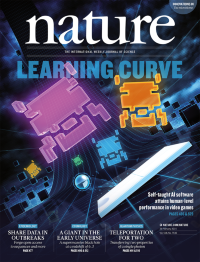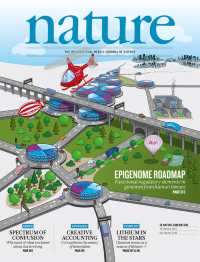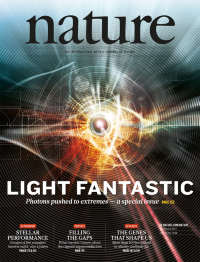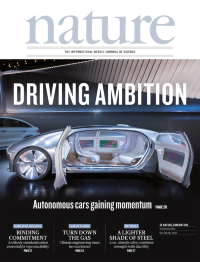Volume 518
-
No. 7540 26 February 2015
The cover imagines attacks from inbound retro-styled sprites deflected by a deep Q-network agent controlled game-paddle, seen� from the agent's perspective. For an artificial agent to be considered truly intelligent it needs to excel at a variety of tasks considered challenging for humans. To date, it has only been possible to create individual algorithms able to master a single discipline � for example, IBMs Deep Blue beat the human world champion at chess but was not able to do anything else. Now a team working at Googles DeepMind subsidiary has developed an artificial agent � dubbed a deep Q-network � that learns to play 49 classic Atari 2600 arcade� games directly from sensory experience, achieving performance on a par with that of an expert human player. By combining reinforcement learning (selecting actions that maximize reward � in this case the game score) with deep learning (multilayered feature extraction from high-dimensional data � in this case the pixels), the game-playing agent takes artificial intelligence a step nearer the goal of systems capable of learning a diversity of challenging tasks from scratch. Cover illustration: Max Cant /Google DeepMind
Innovations In
-
No. 7539 19 February 2015
The NIH Roadmap Epigenomics Mapping Consortium is compiling a comprehensive reference collection of human epigenomes for primary cells and tissues, building on the work of the ENCODE project by defining the functional regulatory elements in genomes taken directly from embryonic, adult, diseased and healthy human tissue. This special issue of Nature presents eight new papers from the team, together with a News & Views Forum airing a range of views on the implications of the Roadmap Epigenomics Project. Research in this issue is accompanied by an online collection � the Epigenome Roadmap � which unites research from across Nature Publishing Group journals, as well as news stories and multimedia. The experience is enhanced by threads�, which highlight topics discussed in more than one paper. Start exploring on www.nature.com/epigenomeroadmap.
-
No. 7538 12 February 2015
To mark the UN International Year of Light and Light-based Technologies, this special issue of Nature focuses on the performance of light and its associated technologies in extreme conditions. Achievements celebrated include making use of twisted light to encode information, medical imaging through opaque materials, speed-of-light trading in the most extreme of financial markets and deciphering the cosmological information hidden in the oldest light in the Universe. Cover illustration: Viktor Koen/Nature.
-
No. 7537 5 February 2015
The Mercedes F 015 Concept car at the North American International Auto Show in Detroit last month. The automobile industry and Silicon Valley IT companies seem to be on a the same journey at the moment, with autonomous or driverless� cars as the destination. Cover: Steve Lagreca/ Shutterstock.com




